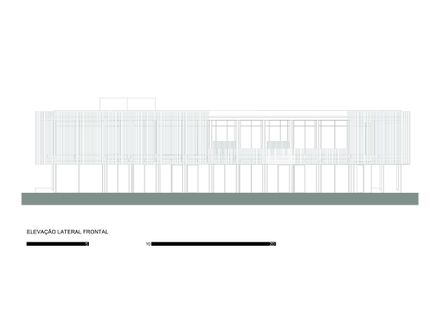ARCHITECTS
Estúdio 41
LEAD ARCHITECT
Emerson Vidigal
DESIGN TEAM
Eron Costin, Fabio Faria, João Gabriel Cordeiro, Martin Goic
COLLABORATORS
Camila De Andrade, Charlles Furtado, Guilherme Pinto
LOCATION
Curitiba, Brazil
CATEGORY
Store
A commercial space in the Batel neighborhood, in Curitiba-PR. Result of a retrofit in which the original structures of the building were maintained, the project was premised on active facades, thus creating a transparency between interior and exterior on the ground floor, in order to allow multiple possible accesses.
The site has a peculiar situation on an urban scale. The lot's morphology is similar to an acute triangle and, when considering the requirements of the legislation, such as the setbacks of the building alignment, there was not enough usable area left for the implantation of the building, or for the construction of a good area in the basement of garages, for example.
As a result, in the first conversations with the clients, the hypothesis arose to renovate the existing building on the lot, carried out in the 90s.
A fundamental aspect of the context is the presence of the small square next to the corner.
It suggests visual integration and pedestrian flows, directly connected with the interior of the store.
On the facades there is a double envelope. An external envelope with a unique character, tailor-made for the development, allows it to accommodate technological changes and correctly withstand the passage of time.
On the ground floor, the glass showcases establish the desired scale of visibility for projects of this nature, with predominantly commercial use.
On the upper floor, the building envelope is constructed with a brise-soleil, in anodized aluminum tubes.
The varied dimensions of the tubes create thicknesses, reacting to light, filtering and shading the interior work and living spaces.
The adoption of a flexible commercial layout allows the adaptability of uses and commercial activities, in order to reframe the relationship between work and the city, establishing visual links between pedestrians, the neighborhood and the users of the building.
It could house a shop, a pastry shop, a restaurant and even an office space, but its key use is related to the day-to-day life of the square, sidewalks and surrounding open spaces.

































